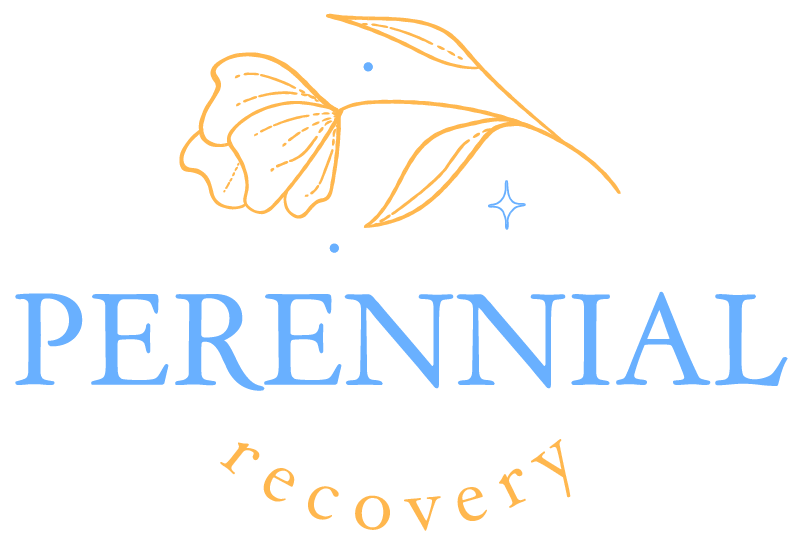Recognizing Burnout
Burnout is a state of chronic physical and emotional exhaustion that is often caused by prolonged exposure to stress and overwhelming work demands. Recognizing the signs and symptoms of burnout is crucial in order to address it effectively. Understanding the impact of burnout on various aspects of life can also help individuals recognize the need for recovery.

Signs and Symptoms of Burnout
Burnout manifests in various ways, both physically and emotionally. It is important to pay attention to the following signs and symptoms, as they may indicate the presence of burnout:

Understanding the Impact of Burnout
Burnout can have a significant impact on various aspects of life, including work, relationships, and overall well-being. Some common effects of burnout include:

Recognizing the signs and understanding the impact of burnout are the first steps towards recovery. By being aware of these indicators, individuals can take proactive measures to address burnout and regain a sense of balance and well-being.
Self-Reflection and Assessment
In order to recover from burnout, it is essential to engage in self-reflection and assessment. This involves taking the time to identify personal triggers and assessing your stress levels. By gaining a better understanding of these aspects, you can begin to address the root causes of burnout and take steps towards recovery.
Identifying Personal Triggers
Identifying personal triggers is an important step in recovering from burnout. These triggers can be specific situations, environments, or even patterns of behavior that contribute to feelings of overwhelm and exhaustion. By recognizing these triggers, you can take proactive measures to avoid or manage them effectively.

Assessing Your Stress Levels
Assessing your stress levels is crucial for understanding the extent of burnout and tailoring your recovery efforts. Stress can manifest in various ways, including physical, emotional, and cognitive symptoms. By evaluating these symptoms, you can gain insight into the severity of your burnout and determine the appropriate strategies for recovery.

By engaging in self-reflection and assessing personal triggers and stress levels, you can start to dismantle the factors contributing to burnout. This awareness serves as a foundation for implementing the subsequent steps towards recovery, enabling you to prioritize self-care, establish boundaries, and seek support. Remember, recovery is a journey, and by taking these vital steps, you can reignite your fire and restore balance in your life.
Steps to Recovery
Recovering from burnout requires a series of intentional steps to restore balance and well-being in your life. By following these steps, you can gradually overcome burnout and regain your energy and enthusiasm.
Step 1: Prioritize Self-Care
Prioritizing self-care is essential for recovering from burnout. It involves taking deliberate actions to nurture your physical, mental, and emotional well-being. This can include getting enough sleep, eating nutritious meals, and engaging in activities that bring you joy and relaxation. By making self-care a priority, you replenish your energy reserves and build resilience.
Step 2: Establish Boundaries
Establishing boundaries is crucial in preventing burnout from recurring. It involves setting clear limits on your time, energy, and commitments. Learn to say no to tasks or responsibilities that overwhelm you and delegate when possible. By setting boundaries, you create space for self-care, reduce stress, and reclaim control over your life.
Step 3: Seek Support
Seeking support is vital during the recovery process. Don’t hesitate to reach out to friends, family members, or colleagues who can provide understanding, encouragement, and guidance. Professional support from therapists or coaches can also be beneficial in navigating burnout and developing coping strategies. Remember, you don’t have to face burnout alone.
Taking these initial steps toward recovery lays the foundation for a healthier and more balanced life. By prioritizing self-care, establishing boundaries, and seeking support, you are on the path to regaining your vitality and reigniting your passion.
Strategies for Rejuvenation
In order to recover from burnout, it’s important to implement strategies that focus on rejuvenating both the mind and body. This section will explore three vital steps: engaging in relaxation techniques, incorporating physical activity, and practicing mindfulness and meditation.
Step 4: Engage in Relaxation Techniques
Relaxation techniques can play a significant role in alleviating burnout symptoms and promoting overall well-being. By consciously engaging in relaxation activities, individuals can reduce stress levels and restore a sense of calm. Here are some effective relaxation techniques to consider:

Taking regular breaks throughout the day to practice these techniques can help rejuvenate the mind and provide a much-needed respite from burnout. Experiment with different techniques to find the ones that work best for you.
Step 5: Incorporate Physical Activity
Physical activity is not only beneficial for physical health but also plays a crucial role in combating burnout. Engaging in regular exercise releases endorphins, which act as natural mood boosters and stress relievers. Here are some types of physical activity that can be incorporated into your daily routine:

Finding an activity that you enjoy and can commit to on a regular basis is key. Start with small, achievable goals and gradually increase the intensity and duration of your physical activity.
Step 6: Practice Mindfulness and Meditation
Mindfulness and meditation can be powerful tools for recovering from burnout. These practices help to calm the mind, increase self-awareness, and promote a sense of inner peace. By dedicating time to mindfulness and meditation, individuals can cultivate a greater sense of well-being and resilience. Consider the following mindfulness and meditation techniques:

Incorporating mindfulness and meditation into your daily routine, even if it’s just for a few minutes, can make a significant difference in your overall well-being and recovery from burnout.
By implementing these strategies for rejuvenation, individuals can take proactive steps towards recovering from burnout. Engaging in relaxation techniques, incorporating physical activity, and practicing mindfulness and meditation can help restore balance, reduce stress levels, and promote overall well-being. Remember, it’s important to prioritize self-care and make these strategies a consistent part of your daily routine.
Building Resilience
To recover from burnout and regain a sense of balance and well-being, it is important to focus on building resilience. This involves developing strategies and habits that promote mental and emotional strength. Here are three vital steps to help you build resilience:
Step 7: Cultivate Positive Relationships
Building and nurturing positive relationships is crucial for recovering from burnout. Surrounding yourself with supportive and uplifting individuals can provide a sense of belonging, understanding, and encouragement. These relationships can help alleviate stress, boost your mood, and provide a support system during challenging times.
Benefits of Positive Relationships
– Emotional support
– Reduced feelings of isolation
– Increased self-esteem
– Improved mental well-being
To cultivate positive relationships, consider:
- Engaging in activities or joining groups that align with your interests.
- Prioritizing quality time with loved ones.
- Communicating openly and honestly with trusted individuals.
- Seeking professional support, such as therapy or counseling, if needed.
Step 8: Develop Healthy Coping Mechanisms
Developing healthy coping mechanisms is essential for managing stress and preventing burnout. It involves finding effective ways to deal with challenges and emotions in a constructive manner. Healthy coping mechanisms can help reduce stress levels, enhance emotional well-being, and promote resilience.
Examples of Healthy Coping Mechanisms
– Engaging in hobbies or activities you enjoy
– Practicing relaxation techniques, such as deep breathing or journaling
– Seeking professional help, such as therapy or counseling
– Expressing emotions through creative outlets, such as art or music
When developing healthy coping mechanisms:
- Identify activities or techniques that help you relax and recharge.
- Experiment with different strategies to determine what works best for you.
- Prioritize self-care and make time for activities that bring you joy.
- Practice self-compassion and be patient with yourself during the recovery process.
Step 9: Set Realistic Goals
Setting realistic goals is an important step in recovering from burnout. It involves establishing achievable objectives that align with your values and priorities. Setting unrealistic goals can lead to feelings of failure and contribute to burnout, while realistic goals provide a sense of accomplishment and motivation.
Benefits of Setting Realistic Goals
– Increased motivation
– Enhanced self-confidence
– Improved time management
– Reduced stress levels
To set realistic goals:
- Evaluate your current commitments and responsibilities.
- Break larger goals into smaller, manageable tasks.
- Prioritize tasks based on importance and urgency.
- Celebrate milestones and acknowledge progress along the way.
By cultivating positive relationships, developing healthy coping mechanisms, and setting realistic goals, you can strengthen your resilience and recover from burnout. Remember, resilience is a journey, and it takes time and effort to build. Be patient with yourself and embrace the process as you work towards restoring balance and well-being in your life.
Moving Forward
After taking the necessary steps to recover from burnout, it’s important to focus on moving forward and maintaining a balanced and fulfilling life. Here are three vital steps to help you navigate this phase of your journey:
Step 10: Embrace Change and Adaptability
Embracing change and being adaptable are essential for preventing burnout from recurring. Recognize that change is a natural part of life and that adapting to new circumstances can lead to personal growth and resilience. Embracing change involves being open-minded, flexible, and willing to step outside of your comfort zone.
Strategies for Embracing Change and Adaptability
Embrace a growth mindset
Stay open to new ideas and possibilities
Practice flexibility in your thinking and actions
Cultivate a sense of curiosity and willingness to learn
Emphasize problem-solving skills
Seek opportunities for personal and professional development
Step 11: Maintain Work-Life Balance
Maintaining a healthy work-life balance is crucial for preventing burnout and sustaining your well-being. Striking a balance between work responsibilities and personal life allows you to recharge, relax, and pursue activities that bring you joy. Here are some strategies to help you maintain work-life balance:
Strategies for Maintaining Work-Life Balance
Set clear boundaries between work and personal life
Prioritize self-care and make time for activities you enjoy
Delegate tasks when possible
Learn to say no to excessive work demands
Establish a support system to help manage responsibilities
Create a schedule that includes dedicated time for relaxation and leisure
Step 12: Celebrate Progress and Success
Celebrating progress and success, no matter how small, is an important part of the recovery process. Acknowledging your achievements and milestones can boost your motivation, self-esteem, and overall well-being. Celebrating progress and success can take various forms, including:
Ways to Celebrate Progress and Success
Reflect on your accomplishments and give yourself credit
Share your achievements with supportive friends or family members
Treat yourself to something special or indulge in a favorite activity
Take time to appreciate how far you’ve come
Set new goals and reward yourself when you achieve them
By embracing change and adaptability, maintaining work-life balance, and celebrating progress and success, you can continue on the path of recovery and prevent burnout from recurring. Remember to be patient with yourself and prioritize your well-being as you move forward towards a healthier, more fulfilling life.
Sources
https://health.clevelandclinic.org/how-to-recover-from-burnout
https://www.calm.com/blog/how-to-recover-from-burnout
https://www.betterup.com/blog/how-to-recover-from-burnout




